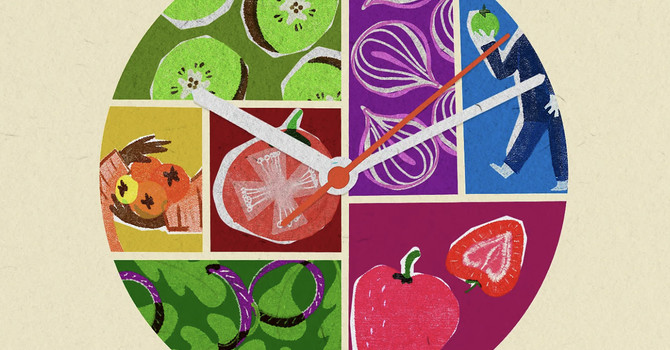“Treat an illness first with food - only if this fails should medicines be prescribed,” famously advised Sun Simiao, the prolific seventh-century Chinese physician and writer.
Centuries later, this tenet remains central to traditional Chinese medicine (TCM) practiced today, which is all about creating harmony within the body.
As we gently shed the hibernation energy of winter Adrian Chang, a Chinese American cook and food writer, says we should be consuming a range of in-season foods, especially those that help clean out the liver such as vegetables like leafy or bitter greens, spring carrots, and radishes. The liver needs special attention during this season since it’s working overtime to deliver the vital life force, qi, throughout the body. But Chang cautions that, while food is certainly a central pillar in TCM, lifestyle practices are equally important aspects in balancing the mind, body, and spirit; exercise, sleep, and stress reduction all play a role. TCM is “less about a quick fix and more about nourishing that which is lacking or reducing that which is in overabundance,” he explains.
Here, Chang shares seven TCM-backed tips on how to transition from winter and reenergize your spring routine:
Get a good night’s rest but don’t sleep in too late
Our bodies don’t need to hibernate anymore like we did to save energy in the winter, but we also want to make sure we are rested for the longer spring days ahead.
Take it easy on the exercise
The seasons are going through a massive change and that affects us energetically and physically. During the spring, it’s best not to shock your system. Warm up first with gentle exercises that get your heart pumping but are low impact and low stress. “I do a lot of yoga and pilates, and have recently started incorporating tai qi and qi gong into my routine, something my grandfather used to do every morning,” Chang says. “I also do a lot of hiking because I love the mindfulness aspect of being outdoors while getting my blood flowing.”
Eat locally and seasonally
“During winter we were eating warming foods, like garlic and ginger, but we can now start to eat cooler foods to balance us out,” Chang says. Stick to what nature offers up: cool-weather spring greens like pea sprouts, mustard greens, and kale, including the flowers as they start to bolt with the warming weather. Check with your local farmers or farmers markets and keep to what they are currently growing.
Eat wild
Foraging wild greens, herbs and mushrooms (be sure you know which to pick and which to avoid – some are toxic) is a great way to reap the benefits of what’s free and abundant all around. Not confident foraging wild plants? You can also buy them from some farmers markets.
Incorporate warm water, tea, or soup at mealtimes
This applies all year-round. Chinese and many other East and Southeast Asian cultures agree that ingesting warm liquids balances your body’s physical and energetic temperature. Cold water is too much of a jolt to the body, but teas or warm water are said to balance a meal and aid in digestion.
Make rice porridge
Jook, as it is called in Cantonese, is a rice porridge made by slow-cooking rice with chicken stock or water for hours, until it reaches a risotto-like consistency. Typically, it’s served with any number of toppings and sauces, like cilantro, scallions, and chili oil. Chang turns to jook in spring as a way to make rice easier to digest and considers it a perfect vessel for raw or cooked vegetables. Experiment with the highly nutritious locally grown wild rice from Northern Saskatchewan available at Sask Made, organic food stores, and farmers markets.
Go easy on alcohol
We all know how alcohol can challenge the liver, so resist the urge to drink all day in the sun on the weekends.
For more healthful inspiration, check out Adrian’s Instagram and My Kitsune Café!
Take pleasure in the spring and be well.
- Edited from the original Bon Appetit online article by Lisa Wong Macabasco, April 22, 2021 available by clicking the link on the header page.





